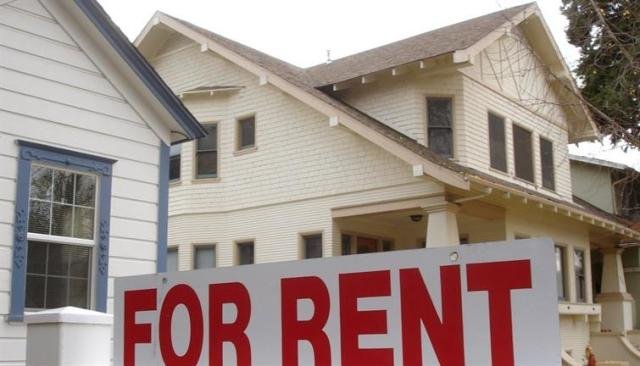Affordable housing remains a pressing issue globally, with many individuals and families struggling to find suitable and affordable accommodation. In addressing this complex challenge, access to accurate and comprehensive affordable housing data is crucial. In this article, we delve into the challenges surrounding affordable housing data and explore potential solutions.
Challenges in Affordable Housing Data

1. The Challenge of Data Accessibility
Accessing relevant and comprehensive affordable housing data poses a significant challenge for policymakers, researchers, and community advocates alike. Fragmented data sources, proprietary data restrictions, and bureaucratic hurdles often impede efforts to gather holistic insights into the affordable housing landscape.
According to the U.S. Department of Housing and Urban Development (HUD), despite the availability of various housing datasets, disparities in data accessibility persist, hindering comprehensive analysis and decision-making processes. This lack of accessibility stems from a multitude of factors. Firstly, housing data is often dispersed across multiple government agencies, each with its own data collection methodologies and reporting standards. As a result, stakeholders are forced to navigate a complex web of data sources, leading to inefficiencies and gaps in understanding. Additionally, proprietary data restrictions imposed by private entities further exacerbate the issue, limiting access to critical information needed to inform policy and investment decisions.
Furthermore, bureaucratic hurdles such as data sharing agreements and privacy concerns can impede efforts to access and utilize housing data effectively. Government agencies may be reluctant to share data due to legal constraints or concerns over confidentiality, resulting in delays and obstacles in obtaining essential information. This fragmented and restricted data landscape not only hampers the ability to accurately assess housing needs but undermines efforts to develop targeted interventions and allocate resources efficiently.
2. Data Quality and Standardization
Another hurdle in the realm of affordable housing data is the issue of data quality and standardization. Diverse data sources often employ varying methodologies, definitions, and reporting standards, leading to inconsistencies and inaccuracies in housing datasets. This lack of uniformity not only complicates efforts to analyze and interpret housing data but also undermines its reliability and credibility. For instance, different agencies may use disparate definitions of “affordable housing” or employ different criteria for measuring housing affordability, resulting in divergent assessments of housing needs and trends. Additionally, variations in data collection methods and sampling techniques can introduce biases and errors, further complicating efforts to derive meaningful insights from housing data.
As highlighted by the Government Accountability Office (GAO), ensuring data accuracy and standardization is paramount for policymakers and stakeholders to make well-informed decisions and accurately assess housing needs. Without standardized reporting protocols and quality assurance mechanisms in place, stakeholders may struggle to reconcile discrepancies and discrepancies and inconsistencies across datasets. Moreover, the lack of standardized definitions and metrics can hinder comparability and benchmarking efforts, limiting the ability to track progress and evaluate the impact of housing policies and interventions over time. Therefore, efforts to improve data quality and standardization are essential to enhancing the credibility and utility of affordable housing data for decision-making and policy formulation.
3. Identifying Housing Needs and Trends

Effectively identifying affordable housing needs and emerging trends requires robust data analysis and interpretation. However, disparate datasets and limited analytical capabilities often impede efforts to glean actionable insights into evolving housing demands, demographics, and market dynamics. The fragmentation of affordable housing data across multiple sources, including government agencies, research institutions, and private organizations, poses a significant barrier to conducting comprehensive analyses. Moreover, the lack of interoperability among these datasets complicates efforts to integrate and harmonize disparate data sources, hindering the ability to develop a unified understanding of the affordable housing landscape.
According to the U.S. Census Bureau, while comprehensive housing data is available, harnessing this data to identify and address evolving housing needs remains a persistent challenge, particularly in underserved communities. Disparities in data coverage and granularity often result in the underrepresentation of marginalized populations, making it difficult to accurately assess their housing needs and vulnerabilities. Additionally, limited analytical capabilities, including the lack of advanced statistical tools and data visualization techniques, further constrain the ability to extract meaningful insights from housing data. As a result, policymakers and stakeholders may struggle to devise targeted interventions and allocate resources effectively to address the diverse and complex housing challenges facing communities across the nation.
4. Addressing Data Gaps
Addressing data gaps in the affordable housing landscape is crucial for fostering more inclusive and equitable housing policies and programs. Yet, identifying and filling these gaps requires concerted efforts and resources to ensure that no community is left behind. While strides have been made in improving data accessibility and quality, significant gaps persist, particularly in areas such as affordable rental housing, homelessness, and housing instability. These data gaps not only hinder efforts to accurately assess housing needs but also limit the effectiveness of policy interventions aimed at addressing housing affordability and homelessness.
As noted by the Urban Institute, substantial data gaps persist in areas such as affordable rental housing, homelessness, and housing instability, underscoring the need for targeted interventions and data collection initiatives in affordable housing data. In many cases, marginalized communities, including low-income households, people of color, and individuals experiencing homelessness, are disproportionately affected by these data gaps, exacerbating existing disparities in access to affordable housing. Therefore, concerted efforts are needed to prioritize data collection and research initiatives that focus on underserved populations and marginalized communities.
By filling these data gaps, policymakers and stakeholders can gain a more comprehensive understanding of housing needs and vulnerabilities, enabling them to develop more effective and targeted interventions to address the root causes of housing insecurity and homelessness.
Solutions in Affordable Housing Data

1. Enhanced Data Sharing and Collaboration
Promoting data sharing and collaboration among government agencies, non-profit organizations, and research institutions can foster a more comprehensive understanding of the affordable housing landscape. Establishing data-sharing agreements and platforms can facilitate the exchange of information while safeguarding privacy and confidentiality in the realm of affordable housing data. By breaking down silos and promoting cross-sector collaboration, stakeholders can leverage diverse expertise and resources to address complex housing challenges more effectively.
The U.S. Interagency Council on Homelessness advocates for enhanced collaboration among federal agencies, state governments, and local stakeholders to streamline data sharing and improve outcomes for individuals experiencing homelessness. Through initiatives such as the Homelessness Data Exchange (HDX), stakeholders can access a wealth of data and resources to inform their efforts to prevent and end homelessness. By standardizing data collection methods and reporting standards, the HDX enables stakeholders to track progress, identify emerging trends, and allocate resources strategically to address homelessness effectively. Furthermore, the HDX facilitates collaboration among diverse stakeholders, including government agencies, service providers, and advocacy organizations, to develop evidence-based interventions and policies to address the root causes of homelessness.
In addition to formalized data-sharing agreements, fostering a culture of collaboration and knowledge exchange is essential for promoting innovation and driving progress in affordable housing data. By convening stakeholders through forums, conferences, and working groups, organizations such as the National Alliance to End Homelessness and the National Low-Income Housing Coalition create opportunities for dialogue, networking, and capacity-building. These platforms enable stakeholders to share best practices, lessons learned, and innovative approaches to addressing affordable housing challenges. Moreover, by engaging with affected communities and incorporating their perspectives into data collection and analysis efforts, stakeholders can ensure that housing policies and programs are responsive to the needs and priorities of those they seek to serve.
2. Standardization and Data Governance

Implementing robust data governance frameworks and standardized reporting protocols is essential for enhancing data quality and consistency in the realm of affordable housing data. Establishing clear guidelines for data collection, storage, and dissemination can mitigate discrepancies and improve the reliability of housing datasets. By defining standardized data fields, formats, and validation rules, stakeholders can ensure consistency and accuracy across disparate datasets, facilitating interoperability and integration. Moreover, implementing data governance policies and procedures helps mitigate risks related to data privacy, security, and compliance, safeguarding sensitive information and enhancing stakeholder trust.
The National Institute of Standards and Technology (NIST) emphasizes the importance of data standardization and governance in ensuring the integrity and interoperability of affordable housing data across diverse platforms and stakeholders. NIST provides guidance and resources to support the development and implementation of data governance frameworks, including best practices for data management, data quality assessment, and metadata management. By adhering to NIST’s standards and guidelines, stakeholders can enhance the reliability, usability, and accessibility of affordable housing data, ultimately enabling more informed decision-making and policy development.
3. Leveraging Advanced Analytics and Technology

Harnessing advanced analytics and emerging technologies such as artificial intelligence (AI) and machine learning (ML) can unlock new insights into affordable housing data, housing needs, trends, and patterns. By leveraging predictive modeling and data visualization tools, stakeholders can forecast housing demand, identify at-risk populations, and tailor interventions more effectively. AI and ML algorithms can analyze vast amounts of affordable housing data to identify correlations, trends, and anomalies that may not be readily apparent through traditional analysis methods. Moreover, by automating repetitive tasks and streamlining data processing workflows, AI and ML technologies can free up valuable time and resources for stakeholders to focus on strategic decision-making and policy development.
The Brookings Institution advocates for the adoption of data-driven approaches and innovative technologies to address complex affordable housing challenges and promote sustainable urban development. By harnessing the power of data analytics, spatial analysis, and predictive modeling, stakeholders can gain a deeper understanding of the interconnected factors driving housing affordability, accessibility, and quality in the realm of affordable housing data. Moreover, by leveraging emerging technologies such as Internet of Things (IoT) sensors, geospatial mapping, and remote sensing, stakeholders can gather real-time data on housing conditions, infrastructure, and environmental factors to inform decision-making and planning efforts. By integrating data-driven insights into policy development and urban planning processes, stakeholders can foster more resilient, inclusive, and sustainable communities for all residents.
4. Community Engagement and Empowerment
Empowering communities to actively participate in data collection, analysis, and decision-making processes can foster greater transparency, accountability, and inclusivity in affordable housing initiatives. Engaging residents as citizen scientists and community researchers can generate localized insights and priorities, informing more responsive and equitable housing policies. By involving community members in data collection efforts, stakeholders can ensure that housing interventions are tailored to meet the specific needs and preferences of diverse populations. Additionally, community engagement fosters a sense of ownership and investment in the decision-making process, empowering residents to advocate for solutions that address their unique challenges and aspirations.
The National Low Income Housing Coalition emphasizes the importance of community-driven data collection and advocacy in advancing affordable housing solutions and reducing disparities in access and affordability. By partnering with grassroots organizations, advocacy groups, and community leaders, stakeholders can build trust, foster collaboration, and amplify the voices of marginalized communities in the discourse surrounding affordable housing data and policy debates.
Moreover, community-driven data collection efforts can provide valuable insights into the lived experiences of residents, shedding light on the barriers and inequities they face in accessing safe, stable, and affordable housing. By centering community perspectives and priorities in data collection and analysis, stakeholders can develop more responsive, inclusive, and effective housing policies that address the root causes of housing insecurity and promote social equity.
Conclusion
In conclusion, while challenges abound in navigating the landscape of affordable housing data, strategic solutions, and collaborative efforts offer pathways to progress. By enhancing data accessibility, ensuring quality and standardization, identifying housing needs, and addressing data gaps, stakeholders can lay the groundwork for more effective and equitable housing solutions. Through enhanced data sharing and collaboration, standardized reporting protocols, advanced analytics and technology, and community engagement, we can build a more resilient and inclusive affordable housing ecosystem that meets the diverse needs of communities across the nation.











